This post may contain affiliate links. If a product or service is purchased using a link(s) in the post below a small commission may be earned.
Last updated on July 5th, 2024 at 11:39 am
I’ve owned my fair share of feral cats over the years. Currently, to date all the cats we have are ferals. We either found them (such as in Sophie’s case). Or they have been born in my backyard.
For the exception of Dylan, Teddy, and Sam they were found by my neighbor next door.

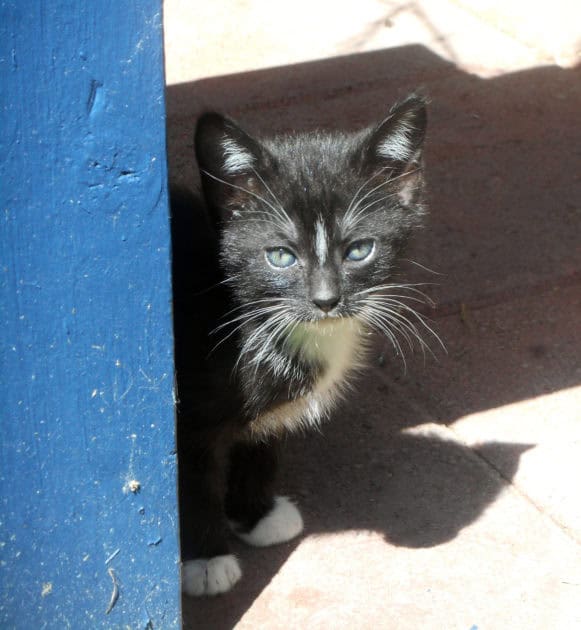

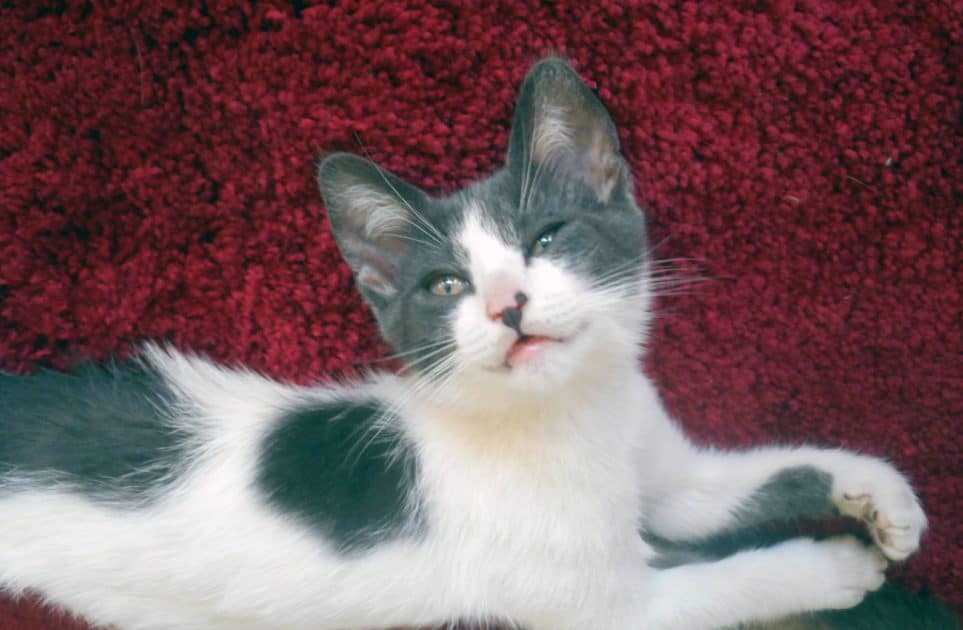
Feral kittens are unique
I’ve noticed that many feral kittens have a variety of personalities. Their coats are also a rainbow of colors. Some may look alike yet not be from the same mama.
Feral kittens can be cute and kind. While others might be a bit feisty or fickle.
Depending on their age you may be able to socialize them. I’ve also noticed that if one parent is tame they may be a bit more docile. This may not always be the case.
Some may be a bit skittish and take time to befriend.
a brief family history
This is currently the case with two kittens we are socializing. They are related to Shadow, Ziggy, and Zorro.
Their parents are Stache and a feral male my mom has named P Sam short for Papa Sam.
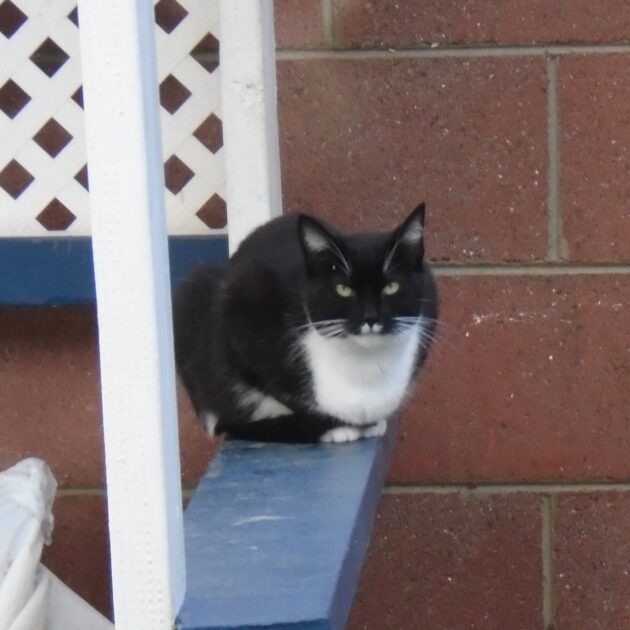
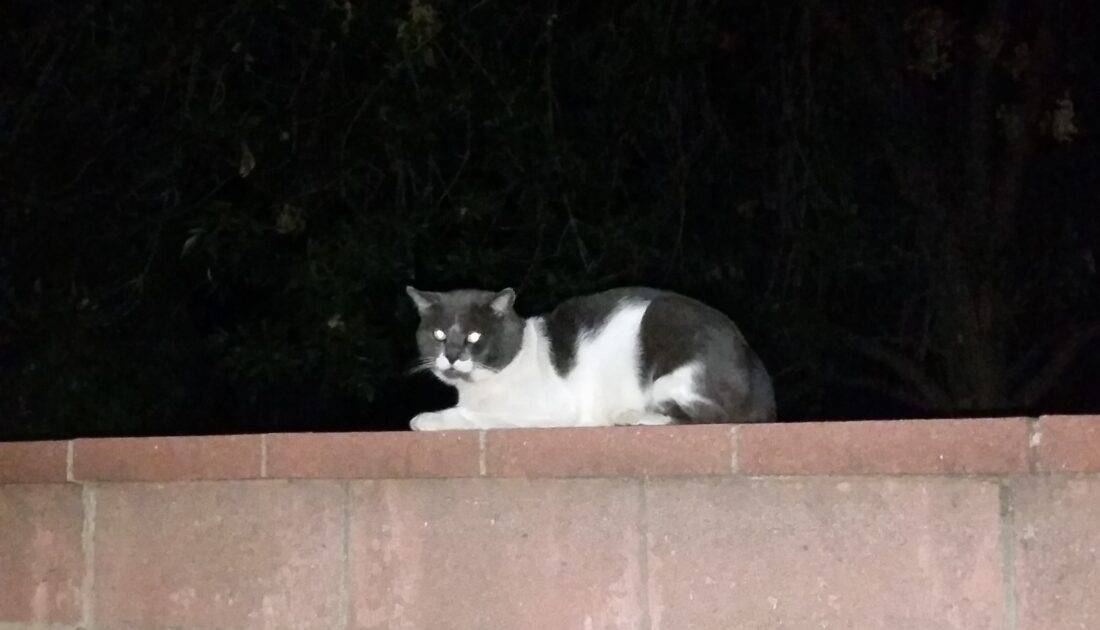
As you can see from the photo above Sam looks a lot like his dad. P Sam and Stache are somewhat socialized. Neither of them let me touch them but they know when it’s time to eat. They also know where it’s safe to sleep or hide on windy or rainy days. Stache was born either in my backyard or with my neighbor.
Her mom was Boots.
Stache is the last of her litter because her two sisters have passed away.
The kittens are very lively and full of energy. My mom named them Jack and Willie.
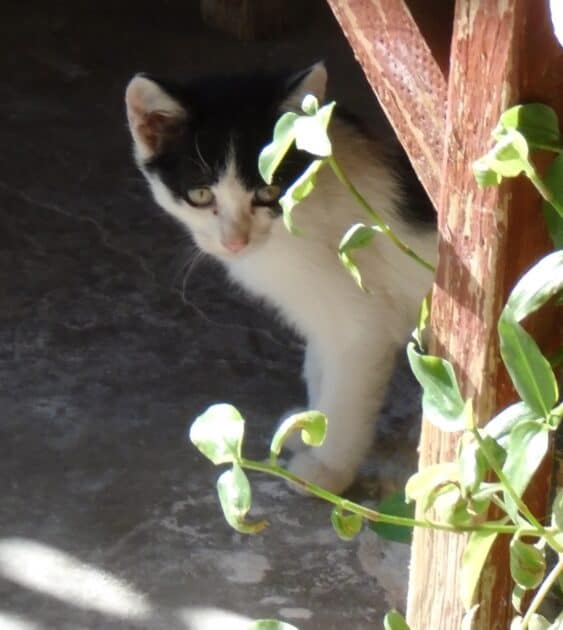
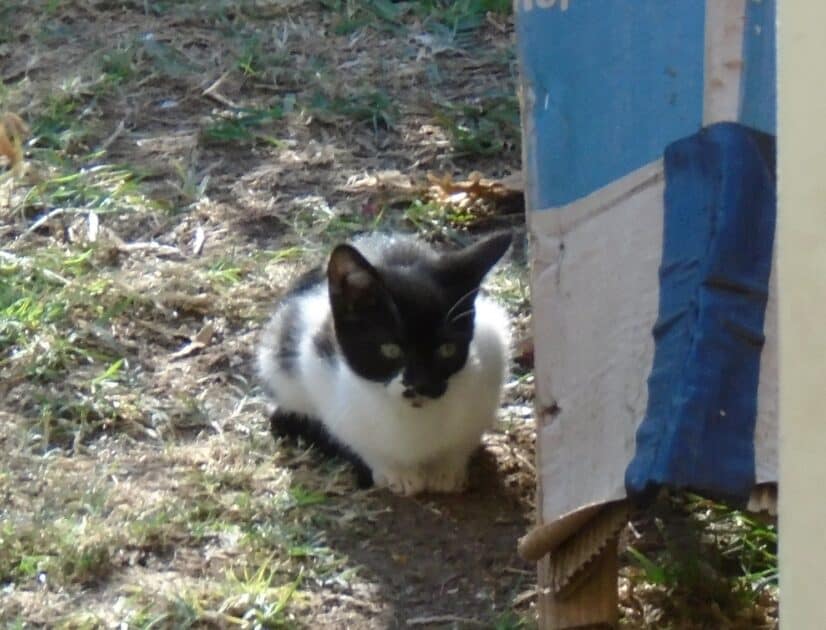
Jack is a lot like Sam he’s very nosy and friendly. He greets all his cousins and his brothers. He loves to pal around with Sam.
Willie is a bit more timid and reminds me a lot of Shadow. He likes to watch and see what’s going on. He’s also like Ziggy he gets startled easily.
Socializing is key
If you opt to take a feral kitten or cat in socializing is a big step. Some ferals don’t like to be picked up or held. Others may not like being petted on certain parts of their body.
For example Teddy’s dad T.J. doesn’t like being picked up. I lifted him about 2 inches off the ground once and he started wailing like he was in danger. He didn’t thrash around or anything he just screamed.

You may be asking how do you socialize a feral kitten or cat. Once again this may depend on their age and if they are used to being around people.
You can try to gain their trust by offering them food, water, or even treats. In jack and Wiilie’s case, they were exposed to our cats. So they knew they were in a safe place. They are beginning to warm up to us. I can pet Jack a little. Willie is a bit fickle when it comes to pets.
We’ve also invited them in the house. I think for them it was more of an adventure. They got curious one day when I left the patio door open. They wanted to know what all the fuss was about.
If this is a scenario at your house all you can do is let the explore a bit at a time.
Stache comes in sometimes when she wants to.
Once the cat or kitten gains confidence you can try to keep them in for a short time. This should only be done if they aren’t too skittish or anxious.
Jack and Willie now come in on their own (sometimes I bribe them with treats). They’ve spent a few nights inside.
toys and a litter box
A few things I noticed Jack and Willie and even Stache enjoy are having toys and of course a litter box.
Stache comes in on rainy days just to use the litter box.
That was also one of the first things Jack and Willie did. We have a few boxes two are covered one is open. They tend to use all three.
I’ve had this Catit litter box for years. I bought another one when Dylan, Sam, and Teddy got a bit bigger. It’s durable plastic and lasts a long time.
What I like to do is insert another litter pan inside it for easier cleanup. I found the Arm and Hammer larger or Jumbo pans fit best.

Toys have been a big hit with Jack and Willie too. I’ve found that Jack loves the roller toys from the Smarty kat toy set.
If you don’t want your cat or kittens to have feather toys you can clip them off.

Many feral cats or kittens can be loving
Many ferals are happy to have a home once they settle in. They may not be like a regular house cat though. They may need to be trained to stay off the counters or table.
Some may have a strong hunting instinct. I’ve noticed this with Sophie and Willie. Sophie would sit and watch the birds outside for hours. She should sit like a statue.
Many also meow at their prey or chitter or chatter. If you’ve ever heard your cat do this it’s different. Some may meow, hiss or even vocalize. Some cats even vibrate their jaw. I found a video that shows some examples.
Some ferals may not make good indoor cats
I know that some ferals may not be the best indoor cat. This may vary by each cat or kitten and the age they are adopted.
Many cats can become destructive if they are left alone for a long time.
This was the case with our cat Tigger he was adopted by us when he was about a year old. He was Pal’s friend. He liked being inside but he also liked being able to go outside. He never caused any damage to furniture but he would get very antsy when he wanted to go out.
He was also started by loud sounds on TV.

I know for a fact if Teddy had been adopted alone and then left home alone for hours he would have destroyed furniture. Dylan and Sam would have done the same.
Every feral is different
Every feral no matter what their age is different. Some may have a stronger hunting instinct. While others would starve out in the wild. Some may be very loving and become the best docile cuddlers. While others might always have a feisty streak in them and only tolerate attention when they want it.
Ferals are a breed all their own but bring so much joy and love into your home.



